From boot camp to home base
September 11, 2014
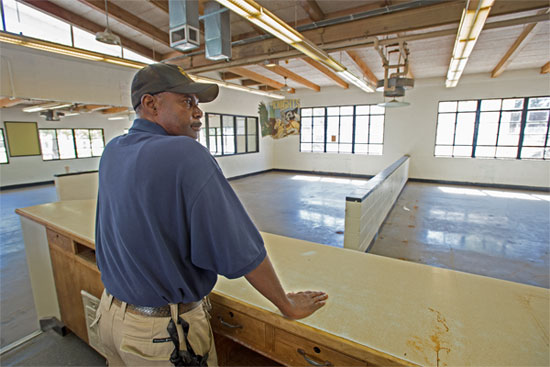
A probation official at the old central command center, where the camp's open dorms were supervised.
When bulldozers rumble into Camp Vernon Kilpatrick in Malibu, they will not only demolish an obsolete juvenile corrections facility but make way for an innovative approach to rehabilitating delinquent youths.
The Los Angeles County Probation Department is turning away from traditional methods that focused on control and punishment. Instead, it’s gradually adopting a model that emphasizes mentoring and a sense of community.
“It’s about building relationships and trust,” said Sean Porter, a director with the department’s Residential Treatment Services Bureau.
“There’s a saying: (the youths) won’t care what we think until they think we care about them,” Porter added. “The more time we spend with the youths, and convey compassion and genuine interest in them, the more they’ll listen to us.”
On Friday, probation officials, along with Supervisor Zev Yaroslavsky, will hold a ceremony to kick off the demolition of Camp Kilpatrick’s aging dormitories, classrooms and gym —only the kitchen and pool will be left intact — while plans for a modern facility are finalized. The project’s completion date is still to be determined.
Originally built as a barracks in 1962, Camp Kilpatrick had an institutional configuration, with bunk beds arranged in rows against cinderblock walls, exposed showers and toilets, and spaces designated for solitary confinement.
It was essentially a boot camp, and Porter believes such an approach tends to produce only short-term benefits
“It’s temporary,” he said. “Unless you change the way the youths think, you’re not going to change the way they behave.”
Probation Chief Jerry Powers is determined to reform the system by emulating some of the techniques used by Missouri’s Division of Youth Services.
The so-called Missouri Model puts youths in small groups with a more home-like—as opposed to jail-like—environment, supervised closely by supportive probation officers, social workers, teachers, psychologists and other professionals.
The approach has dramatically lowered juvenile recidivism rates in Missouri, and jurisdictions in New York, New Mexico, Washington D.C. and California’s Santa Clara County have created their own versions of it.
Powers’ $48-million vision for Camp Kilpatrick calls for tearing down the dilapidated dormitories and building cottages for “core groups” of 8-12 youths.
They would attend classes, eat meals, and engage in counseling sessions and other activities together. The cottages would be furnished with comfortable beds and other amenities, and have lots of natural light and fresh air.
In addition, there would be an on-site doctor’s clinic, daily nursing services and extended mental health clinician coverage—all unique to the Los Angeles Model.
Powers said the goal is to help the youths feel secure, while developing a sense of responsibility, accountability and community.
“Aligning the new facility with new treatment and educational approaches will translate to reduced recidivism, increased academic achievement, and better employment opportunities,” he wrote in a letter to the Board of Supervisors in May.
To date, the board has approved a $41-million budget for the project, about three-quarters of which has been raised through state grants.
Angela Chung, a policy associate with the nonprofit advocacy group Children’s Defense Fund, is excited about the proposed changes.
“I think this is a chance for Los Angeles to be ahead of the curve and move toward a more healing model,” she said.
Porter said if core groups are like a sports team—with their probation officer acting as their coach—Camp Kilpatrick already has a track record of success.
Its winning football team inspired the movie Gridiron Gang, with Porter portrayed by actor/wrestler Dwayne “The Rock” Johnson. Its basketball team almost won a regional championship, while the soccer program has produced a league MVP.
“We’ve used sports to teach self-discipline and the value of hard work, and to develop self-esteem,” Porter said.
“When the youths walked out of the camp and back into their communities, their shoulders weren’t slumped down and their head wasn’t hanging because they were able to accomplish something, and they knew they could do more.”
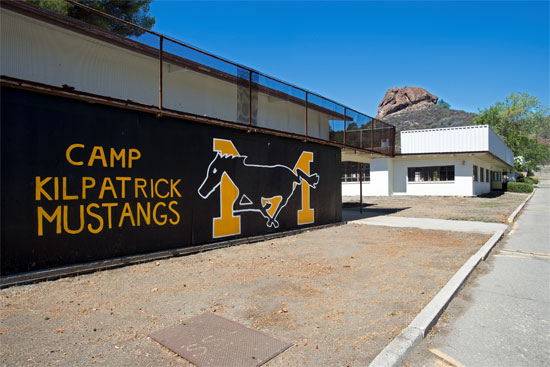
The vacant Camp Kilpatrick will be razed and replaced with a modern facility and a change of philosophy.
Posted 9/11/14
A peak accomplishment
September 11, 2014
Milt McAuley’s fingerprints are all over the Santa Monica Mountains. Soon, his name could be on one of the range’s most visible peaks.
Acting on a motion by Supervisor Zev Yaroslavsky, the Los Angeles County Board of Supervisors voted Tuesday to write the United States Board of Geographic Names in support of changing the name of Peak 2049 to “McAuley Peak.”
The motion is the latest boost to a campaign championed during the past several years by West Hills resident and avid hiker Coby King, who had long felt a special connection to McAuley. Before venturing onto a new trail, King would turn to McAuley’s landmark guidebook, Hiking Trails of the Santa Monica Mountains.
“Most hiking guides are really straightforward,” King said. “But his guidebook, you could hear his voice coming through in every hiking description. You could tell that the guy had a personality and that he loved the mountains.”
McAuley also authored and self-published other reference materials on the mountains, including a wildflower guide and a guide to the popular Backbone Trail, which transects the range from East to West and which he helped plot. McAuley’s books and advocacy for public acquisition of land in the Santa Monica Mountains drew scores of people to the area and generated a groundswell of support to protect the mountains from development.
Although King never met the conservationist, he said he did hike “just about every peak” in McAuley’s book. When the author died in 2008, King was moved to action.
“I felt like he deserved some kind of recognition for all that he had committed to the mountains,” King said. Out of all the hikes to peaks in his guidebook, “2049 was the only one that didn’t already have a name.”
The peak is situated right next to the Backbone Trail and is crested by a large sandstone rock visible for miles. King said the peak is an appropriate monument to a man whose work still looms over the mountains. Since applications to name geographic landmarks can’t be filed until five years after the person’s death, King, who serves as chairman of the Valley Industry & Commerce Association, used his government expertise to start building a case.
After securing the blessing of the McAuley family, he garnered support from elected officials and worked with environmental groups like the Sierra Club, which began calling the site McAuley Peak in their materials.
King is hopeful that the U.S. Board of Geographic Names will quickly approve the application so that the new designation will become official sometime next year. And that’s good news to the many friends and former associates of McAuley, who believe his contributions warrant the honor.
Jim Hasenauer met McAuley in the 1980s when he and some fellow mountain bikers were trying to convince local trail managers to allow them to use the trails. Some of the hikers were resistant, but McAuley—whom Hasenauer described as a gentle giant—was welcoming.
“He felt that people needed to experience the trails, sights, vistas, flora and fauna of the area and then we would appreciate it and die protecting it,” Hasenauer said, adding: “To go on a hike with him was like going to a graduate seminar in mountain ecology.”
Ruth Gerson, who worked with McAuley on the Santa Monica Mountains Trails Council and serves as the organization’s current president, said he was instrumental in naming trails and opening them up for public use. “He was a wealth of knowledge in the mountains,” Gerson said. “There was nobody that disliked him. And he could out-walk anybody—even in his late 70s.”
Bill McAuley, Milt’s son, said he’s never hiked the peak that could soon be named in his dad’s honor. But he certainly intends to hit the trail when, hopefully, McAuley Peak becomes a reality.
“I see the names in the Sierras and they’re all people who had something to do with the mountains,” Bill said. “He really did have a lot of influence.”
Posted 9/11/14
Mountain protections soon a reality
September 10, 2014
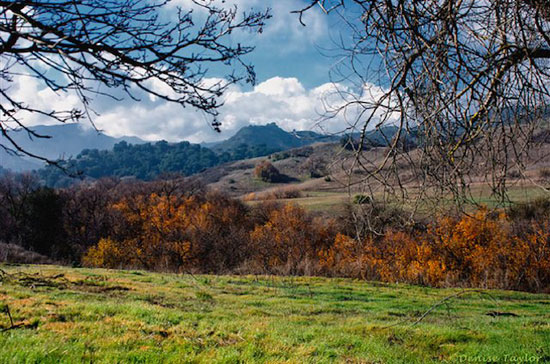
New development rules will keep the Santa Monica Mountains looking like this for future generations.
Culminating one of Los Angeles County’s longest-running environmental efforts, the Board of Supervisors on Tuesday gave final approval to a series of sweeping development restrictions that will preserve the Santa Monica Mountains as one of the nation’s premiere—and pristine—urban recreational treasures.
Passage of the Local Coastal Program (LCP) will protect an 80-square mile swath of environmentally sensitive land from construction that already has scarred some of the mountain region’s most scenic ridgelines and jeopardized fragile wildlife and plant habitats. The plan will preserve the flow of natural streams, outlaw certain rodent poisons and keep the night skies dark through tough outdoor lighting restrictions.
“We only have one Santa Monica Mountain range, and God isn’t making them anymore,” said Supervisor Zev Yaroslavsky, who vowed that the LCP will “protect one of the most beautiful mountain ranges in the state of California. It’s not the High Sierras, but then the High Sierras aren’t the Santa Monica Mountains, either.”
For nearly a decade, Yaroslavsky has championed the plan, alongside the county’s regional planning department and a broad coalition of organizations and individuals with a stake in the mountains.
During a public hearing Tuesday, the only opposition came from a handful of vintners, some of whom own vineyards in the Santa Monica Mountains above the Malibu coastline. They opposed a rule that, under the new plan, would ban the establishment of new vineyards because of their water consumption and the silt that can flow from them into natural streams, endangering wildlife.
Leading the vintners was Don Schmitz, who, in earlier hearings, had lobbied against the LCP’s rigorous new construction restrictions. Schmitz insisted that vineyards are as environmentally friendly as other forms of agriculture permitted under the plan and are a boon to the local economy.
The vineyards, he said, “bring hundreds of thousands of people into the Santa Monica Mountains to go on the wine tours, to go to local wine-tasting rooms, to go to restaurants featuring local wines.”
“It’s important for you to note,” Schmitz told the board, “that this is the Santa Monica Mountains National Recreation Area. It’s not Yosemite, which is a national park. It’s a recreation area.”
Yaroslavsky emphasized that the plan targets only new vineyards, not existing ones like those owned by Schmitz and the others who testified Tuesday. “Nobody is ripping out anybody’s vineyards,” he said.
“Nobody enjoys a glass of cabernet or merlot more than I do,” the supervisor went on to say. “But I have a lot of choices where to get my cabernet. I don’t have a lot of choices where I can see the Santa Monica Mountains National Recreation Area.”
The board approved the LCP by a 3-1 vote. Supervisor Michael D. Antonovich was the lone dissenter, arguing that the vineyard rules unfairly restrict property rights. Supervisor Mark Ridley-Thomas was absent for the vote.
The plan now faces only a final sign-off by the Coastal Coastal Commission, which gave it unanimous approvals in April and July after requesting several minor modifications. The restrictions are expected to go into effect this fall.
Posted 8/27/14
Rhapsody in blue
September 10, 2014
It was the kind of discovery that can rock a gem scientist’s world.
Eloïse Gaillou, an associate curator at the Los Angeles County Natural History Museum, started picking up social media chatter early this year about a 29.6 carat rough diamond found in South Africa.
She hardly imagined that just months later she would be on a team at the Smithsonian Institution conducting scientific tests on the rare diamond—now exquisitely cut to 12 carats and dubbed the Blue Moon for its exceptional color—let alone helping to host the super-stone’s visit to Los Angeles, where it will be on display in the museum’s gem vault from September 13 through January 6.
“We tweeted about it, we blogged about it, never thinking that it would come to us eventually,” Gaillou said.
The Blue Moon will join a collection of 240 colored diamonds called the “Aurora Butterfly of Peace” now on display at the museum.
“Putting those two collections together is really going to be an exceptional thing for the public to see. You won’t be able to see that many colored diamonds again in your life,” Gaillou said. “I’m sure we’re going to blow people’s minds.”
The idea for the temporary exhibition was launched, she said, after the owner of the Butterfly of Peace diamonds put her in touch with Cora International, the diamond firm that owns the Blue Moon. Cora International agreed to allow the museum to display the rare stone, whose distinctive color comes from traces of boron within its carbon structure.
It is likely to be the only public display of the diamond before it disappears discreetly into a private collection, Gaillou said.
Gaillou, who grew up in the Brittany region of France, has childhood memories of prospecting for fossils and minerals in local fields and on vacations with her parents in the Alps. As a geologist specializing in gemstones, she focused on sapphires for her master’s degree and opals for her doctorate, but became interested in diamonds when she pursued a diploma in gemology. It was at the Smithsonian, where she did nearly five years of post-doctoral work before joining the county’s Natural History Museum in 2012, that she began to turn her attention to rare pink and blue diamonds—“the ones that you don’t usually have the opportunity to study unless you are in a very special place that owns such diamonds.”
Even without glamorous visitors like the Blue Moon and the Butterfly of Peace passing through, Gaillou said the NHM’s gem collection is “amazing,” second only to the Smithsonian’s.
While she got a thrill from handling the Blue Moon during the scientific tests with her former colleagues at the Smithsonian last month, it’s clear that science—not jewelry—is this curator’s best friend.
She was most wowed by the Blue Moon’s red afterglow—“a good 20 seconds!”—after it was exposed to UV light. That kind of phosphorescence, she said, is usually associated only with the finest blue diamonds, like the Hope and the Wittelsbach-Graff.
“Diamonds, they’re pretty, don’t get me wrong. But from a scientific point of view, I just love studying diamonds. They give us a clue not only about the deep earth, but also the evolution of the earth from about 3 billion years ago until now,” she said. “You would be done looking at a diamond in about five minutes if you were just looking at its aesthetics. But from the scientific point of view, I have been working on them for over seven years now.”
Still, like a pastry chef who steers clear of macarons, Gaillou said she doesn’t indulge much in sparkling bijoux in her private life.
“I see so many beautiful things that I don’t even buy jewelry myself, or not much. I think it has probably killed it for me,” she laughed.
But she does get a charge out of walking through the museum’s gem exhibits on the way to her office each day, and overhearing the oohs and aahs from visitors.
She’s expecting to get quite an earful in the months ahead. Even though she has studied more than 100 diamonds, including legendary stones like the Hope, the Wittelsbach-Graff and the Blue Heart, she considers the Blue Moon exceptional.
“You never get tired of looking at big gems like that,” said Gaillou, 34. “There’s just something about this color. It’s something that you will never forget.”
“Some gemstones are just dead, and some gemstones are just alive. And definitely this one is alive. You see it. It’s just aglow. The cut is wonderful, the fire is amazing. After that, as to the personality of the Blue Moon, I think that everybody will have a different answer. You just have to come and see the diamond by yourself and make up your mind on that.”
Posted 9/4/14
Fishing for L.A. River fans
September 4, 2014
It may not rival TV’s Bassmasters, but Los Angeles is about to get a small taste of fishing glory.
This Saturday, advocacy group Friends of the L.A. River will host the river’s first-ever fishing competition. Anglers will test their skills at traditional and fly fishing at 9 a.m. before handing things over for a family fishing session at 10 a.m. Rods and reels will be provided. All fish will be released, but not before conservation biologist Rosi Dagit categorizes, weighs and measures each one.
“I have no idea what these folks are going to pull out,” said Dagit, who works for the Resource Conservation District of the Santa Monica Mountains. “Not much biological study has been done since the river was concrete-lined.”
The competition offers a chance to expand on a 2008 study that took the first look at the river’s aquatic life in decades, Dagit said. She expects to see species including carp, tilapia, black bullhead catfish and largemouth bass. Almost all are invasive, she said—native trout living upstream in tributaries haven’t been found in the waterway since the 1940s.
Fishing in the river was prohibited before 2011, when changes in state law opened up the activity to people with a fishing license. Saturday, however, is a “free fishing day”—meaning no license will be required to fish.
Jim Burns, a local fisherman who runs an L.A. River fly fishing blog, remembers being chased out by law enforcement when he first started dropping his lines. He said things have come a long way in the past four years. “When I started, it took me like an hour to actually find the river and find a way to get access to it,” Burns said.
These days, Burns sees more fish and more people. Plastic bag bans and cleanup efforts have made the water cleaner, and that’s been good for all species. He’s recently found reptiles, crayfish and plenty of fish, including an increasing number of white-sided bass, the exact identity of which remain a mystery to him.
That’s where Dagit comes in. As the river’s health continues to improve, she said there’s a good chance that what’s hooked Saturday will be different from what she found in 2008.
“It’s an enormous watershed and it has the potential to support a large population of all kinds of native fishes if we clean up things, restore banks and improve water quality,” Dagit said. “Fish are a touchstone to see how we are doing. They need cool, clean, oxygenated water. We’ve done a masterful job, but we’ve got a long way to go.”
More than anything, Dagit and Burns hope the competition gets people out to enjoy the river with their families. That, they said, is critical to the waterway’s future.
“People take care of things that they love, and they tend to love places that are special to them for one reason or another,” Dagit said. “It doesn’t get much more special than catching a fish with your kid on a Saturday morning in a beautiful place on the river.”
To join the fun, head to North Atwater Park, 3900 West Chevy Chase Drive, at 8:30 a.m. this Saturday, September 6.




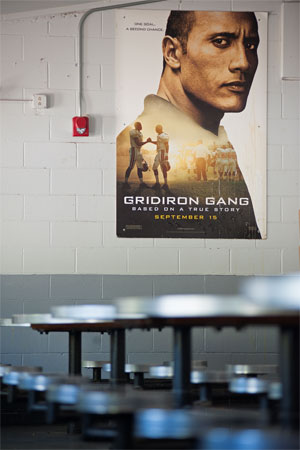
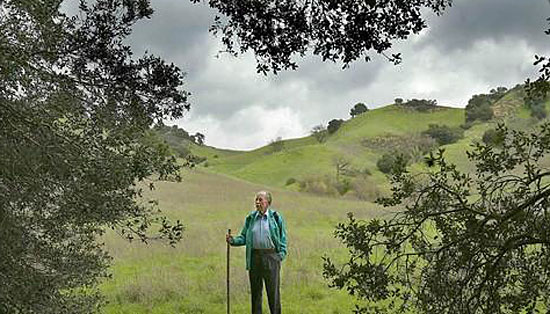
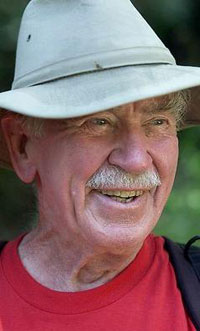
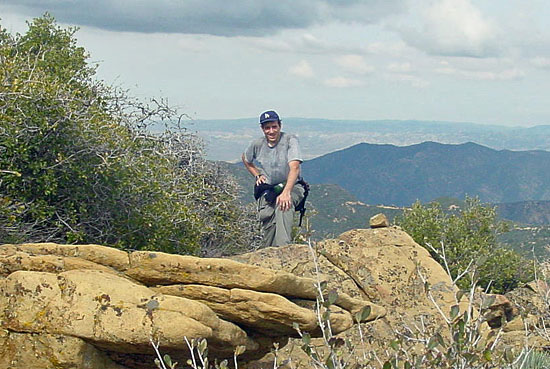
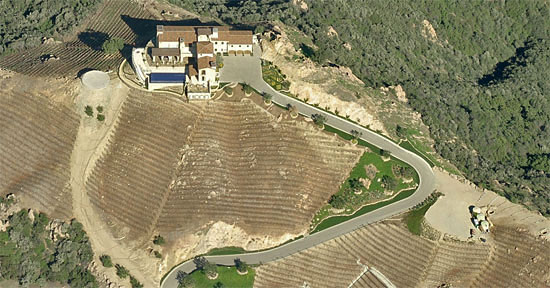
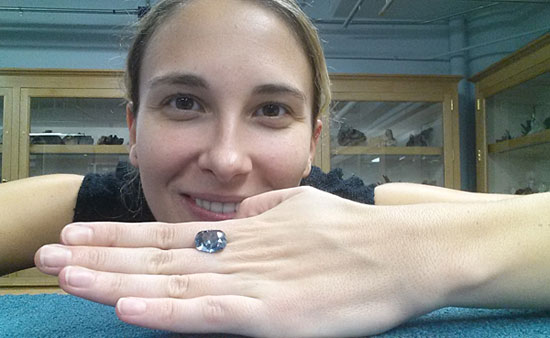







 Check for the latest closure information
Check for the latest closure information








